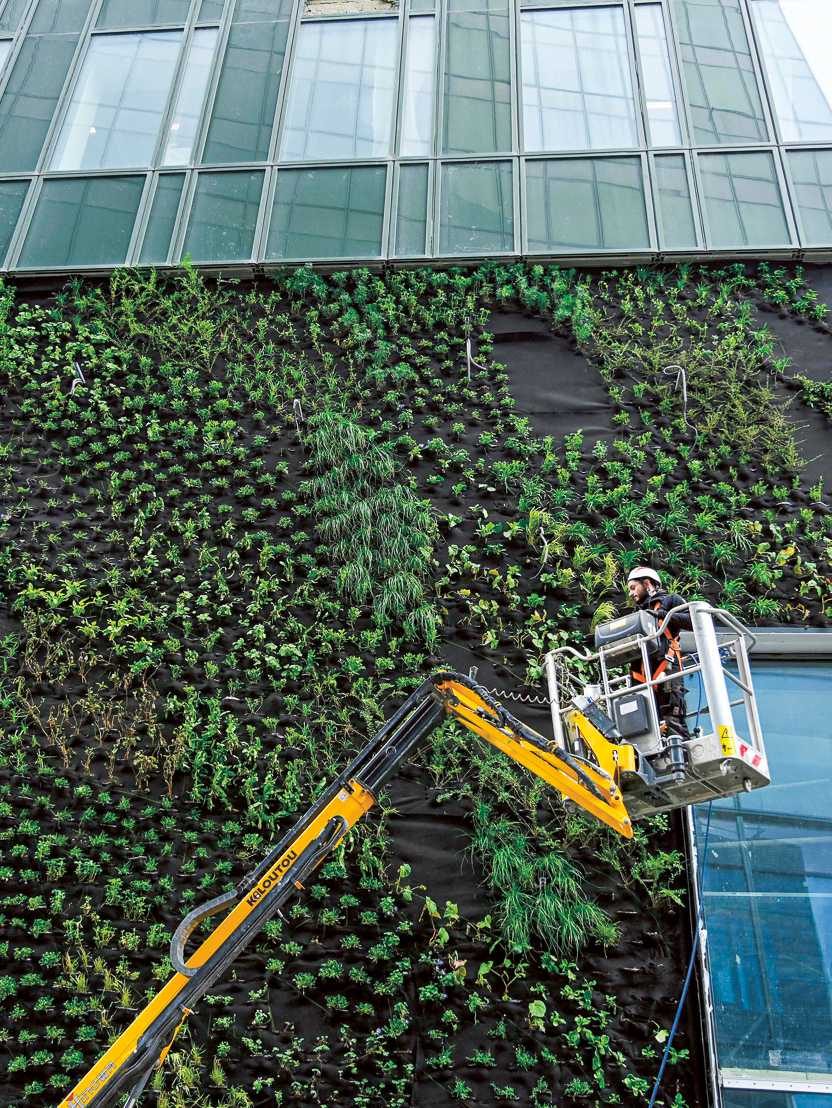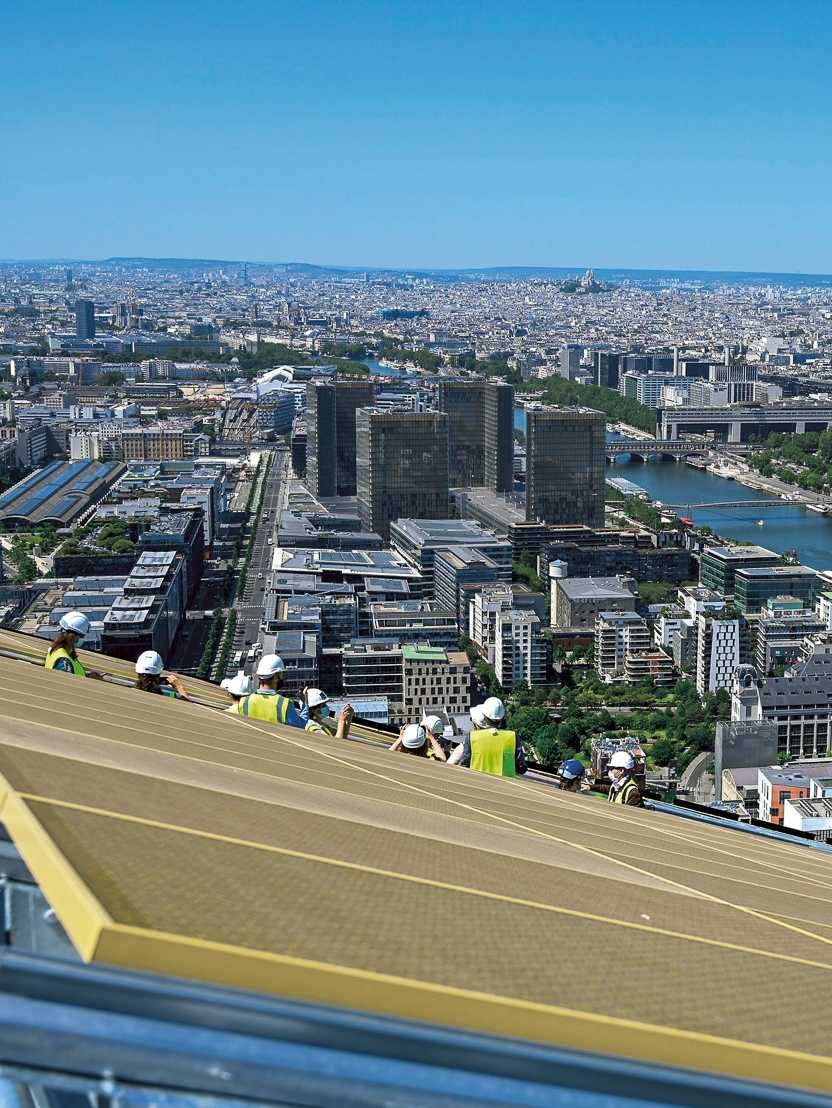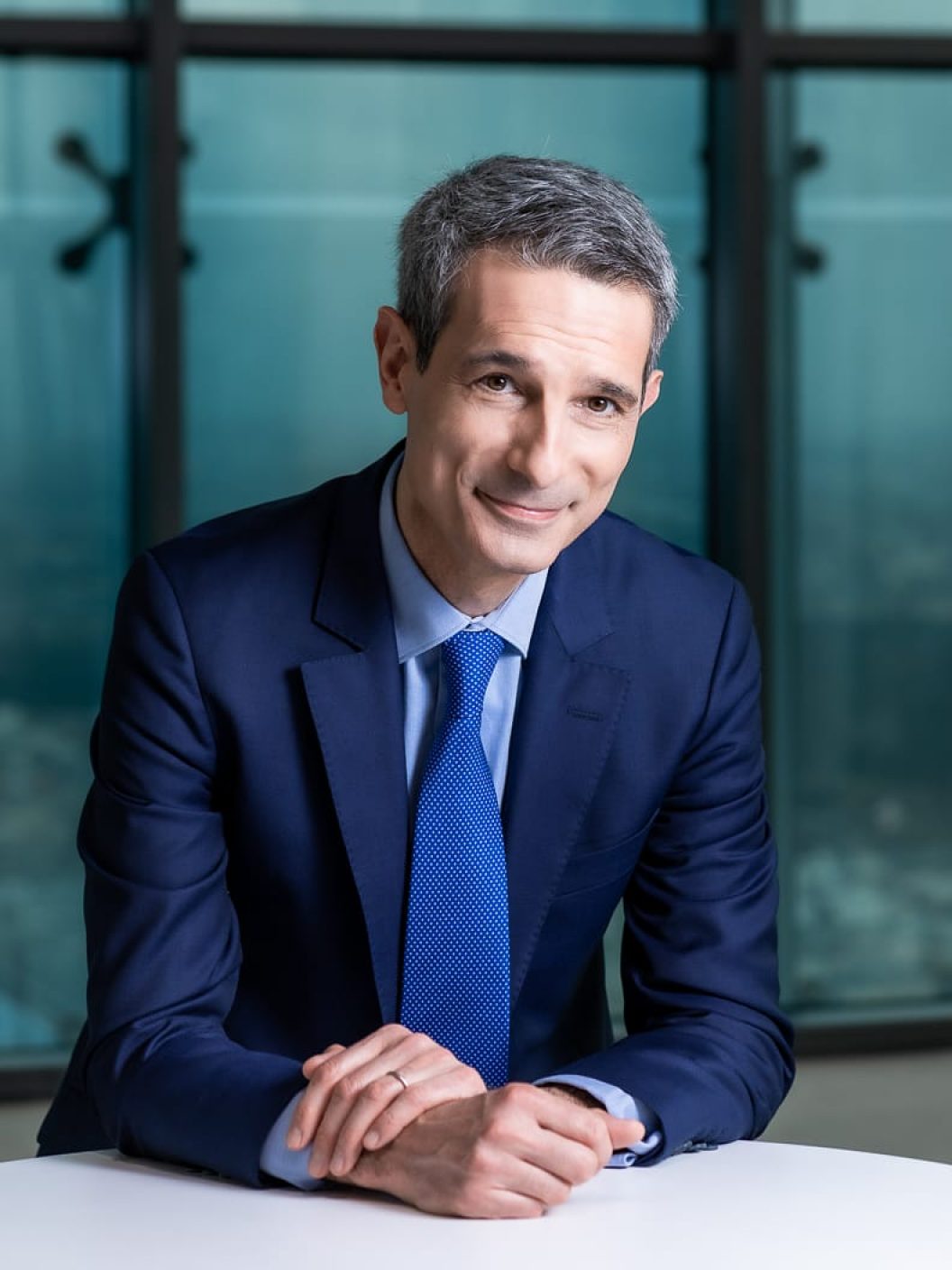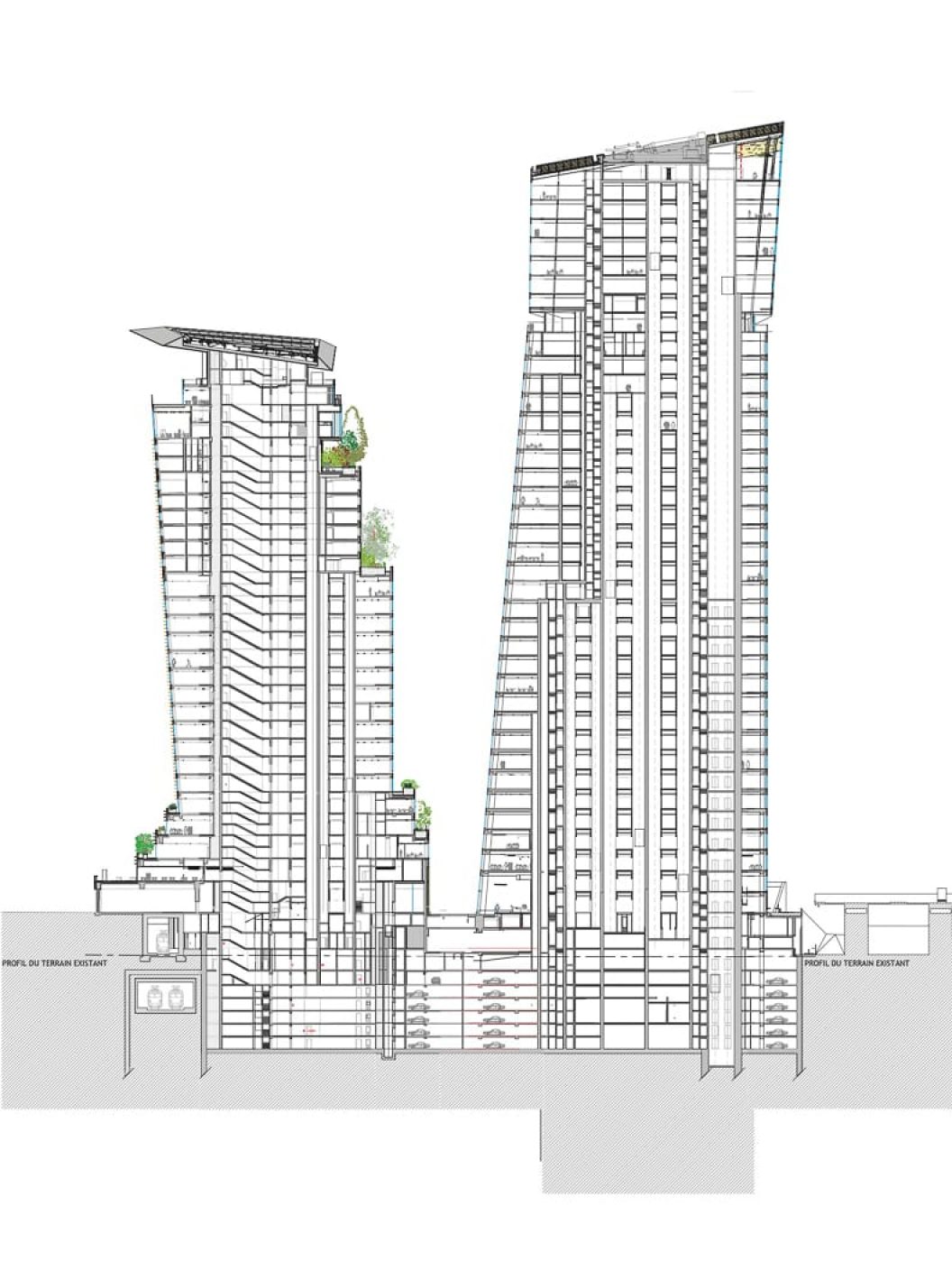
Buildings boasting the highest standards of sustainability
Within the framework of a high environmental quality and sustainable development approach, the most stringent environmental criteria have been respected to ensure that the buildings comply with the highest standards.
All these outstanding initiatives have been recognized by certifications and labels:
- HQE certification
With a ’Sustainable Building Passport’ at the ’Exceptional HQE’ level. - EFFINERGIE+
A label for low-energy buildings applicable since January 2012. - Leed Platinum certification
Leadership in Energy and Environmental Design, ecological and environmental certification for buildings. - WELL Platinum level certification
The Duo Towers are the largest project registered in France meeting the highest standards of comfort, health and well-being for users. - Wiredscore certification
An international benchmark for building connectivity assessment that ensures a building meets stringent criteria for digital infrastructure, resiliency and wireless networks.
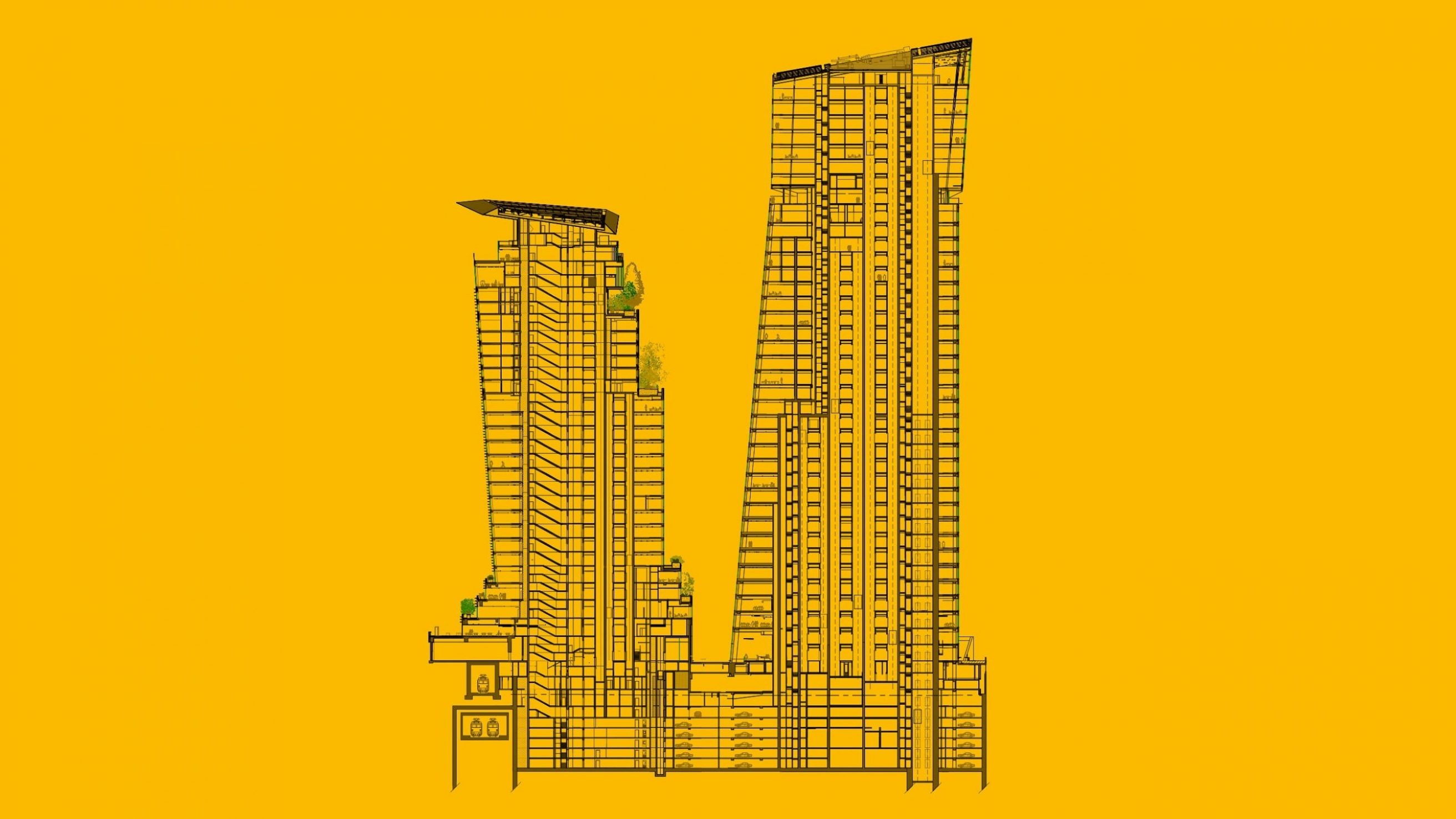
Energy
Objectives:
Limit energy consumption and use renewable energy
Solutions implemented:
Production of self-consumed photovoltaic electrical energy
Hot water produced using solar energy
Water
Objectives:
Limit the consumption of drinking water and delay discharges to the sewers
Solutions implemented:
Recovery of rainwater for watering plants and cleaning the facades
Recovery of grey water for toilet flushing (6,000 cubic meters/year)
USER COMFORT
Objectives:
Visual, thermal, acoustic and climatic comfort.
Solutions implemented:
External sunshades and double-skin facades to allow natural light and views from workstations
Use of reversible radiant ceilings for gentle air movement
FOOTPRINT
Objectives:
Limit the carbon footprint of users’ travel
Solutions implemented:
Tramway T3a, RER line C, Metro line 14, Bus lines 89/62/25
Parking spaces with charging facilities for electric vehicles (8%)
BUILDING MATERIALS
Objectives:
Limit the carbon footprint of the construction work
Solutions implemented:
Use of low carbon and recyclable materials
Use of C2C (Cradle to Cradle) labeled materials
BUILDING USE PLANNING
Objectives:
Diversify uses
Optimize consumption
Solutions implemented:
Multifunctional program: Offices, Shops, Hotel, Restaurants, Bar
Pooling of fire safety installations
Transporting and planting five trees in the East Tower. The trees were hoisted up more than 150 meters into the air to be planted on the 36th and 38th floors. The five trees in question are 3 Bucida trees, more commonly known as the ’black olive tree,’ and two Schefflera trees, also known as the ’umbrella tree’ owing to the graceful droop of its foliage.
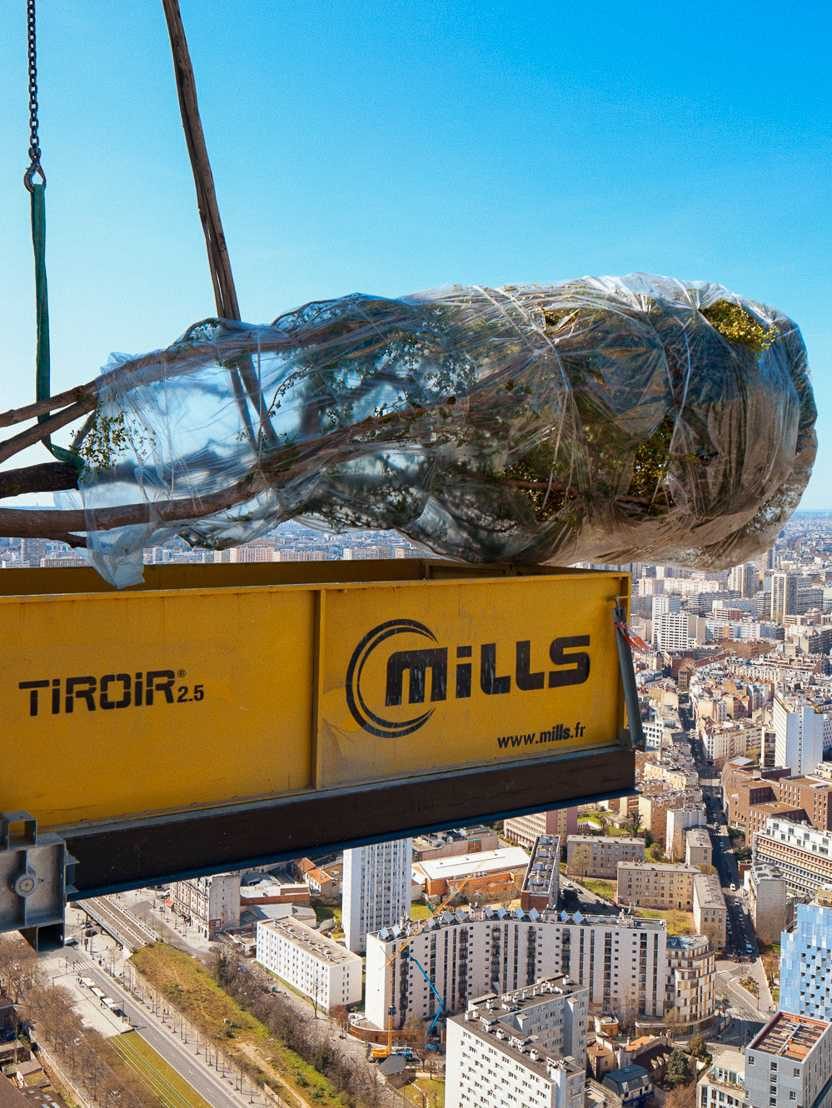
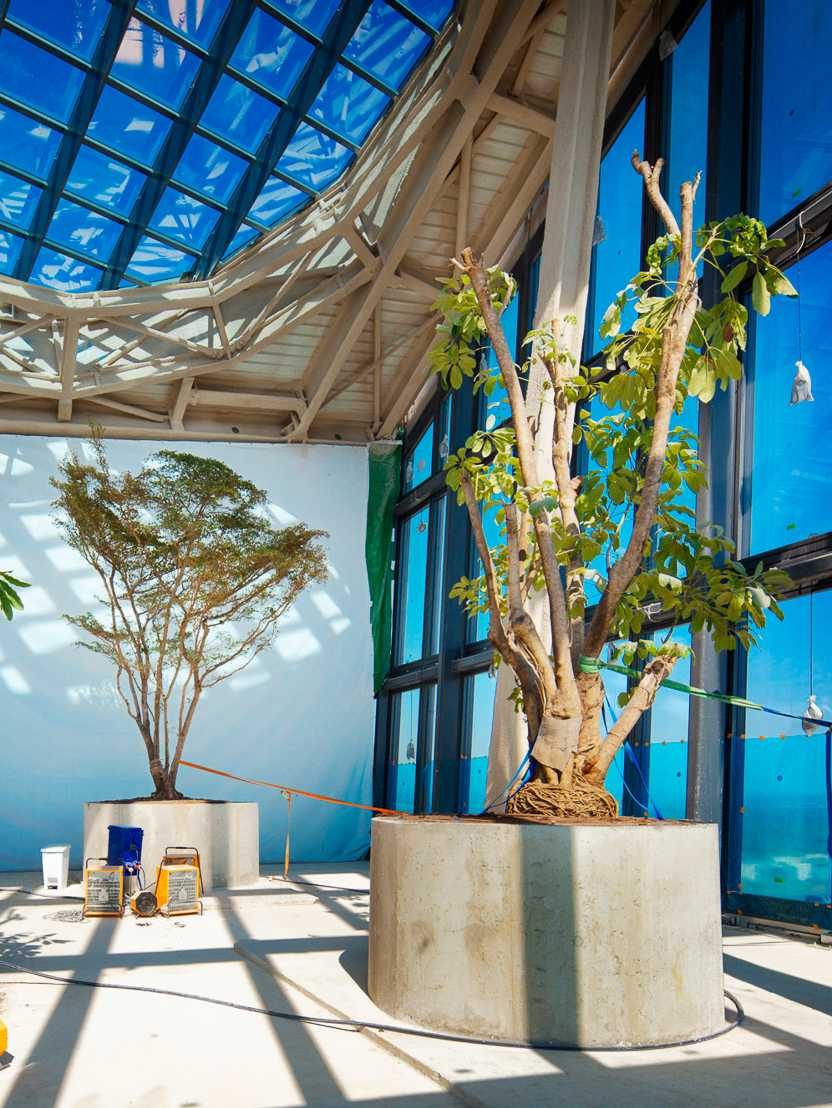
Installation of the 250-square-meter ’green wall’ along the West Tower. It took almost a month of work to attach more than 6,000 plants on it.
825 photovoltaic panels have been installed on the roof of the East Tower, at a height of 180 meters and covering a surface area of 1,500 square meters. Each panel has a nominal power of 250 peak watts, together representing 1% of the towers’ total energy supply.
